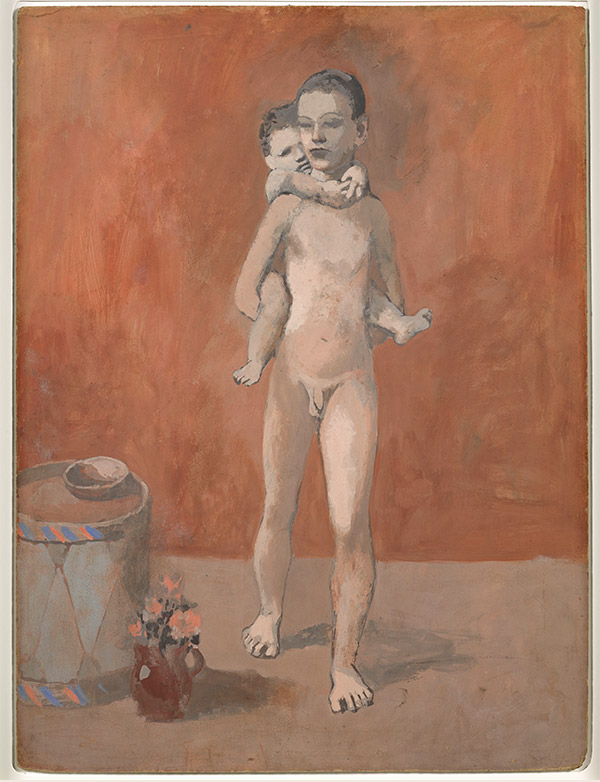A passionate dialogue and abandoned projects.
In the course of their thirteen-year relationship, their works interacted, crossed paths, inspired each other, but never merged. Although Picasso and Apollinaire dreamt of a shared production, they never managed to carry out: it was left on hold, suspended in time. Their collaboration projects were numerous. Guillaume would approach Pablo, who would accept the proposal and then shy away, in a "neither with nor without you" dynamic of sorts. Both artists avoided what could have seemed like a form of intellectual competition, yet each one of them was intent on preserving a sincere, profound friendship. However, their strong personalities were not likely to enable a fruitful dialogue to emerge and lead to a joint output. History has only been left with the projects, with their corresponding share of fantasy.
Accordingly, there were more uncompleted projects than collaborations. Poems and translations, followed by a book about Picasso, were the subject of exchanges, letters, and silences, only to be abandoned over time, leaving Guillaume Apollinaire seized by frustration and doubt: "My dear Pablo, I received your cards and the laurel leaf. You're as sweet as can be. If you're even sweeter you'll promise to send me an etching or two for a little book of poetry in which I'd like to include something very new that would be done by the something-or-other literary society, which does beautiful work. If you agree, they would like to publish the Cervantes short story we had discussed [...] would you?"[1] How can we analyze these missed encounters, these fruitless dialogues? Apollinaire went so far as to ask his friend for a frank and sincere explanation in 1916. But isn't it simply that the meeting of two geniuses makes a shared creation impossible? In 1917, Apollinaire once again expressed his dismay at Picasso's silence: "My dear Pablo, [...] I have written a beautiful poem for you. Did you receive my letter, and will you answer me, yes-or no!"[2]
Apollinaire drew on the images and experiences elicited by his relationships with artists, leaving a major contribution to 20th-century poetry and literature. The Surrealist art movement took shape later on as a result of his impetus.
Shattered mirror spilt salt or falling bread
May these faceless gods always spare me
In any case I don't believe but I watch and I listen and please note
That I read palms quite well
As I don't believe but I watch and when I can I listen
Guillaume Apollinaire, 1918.[3]
After Picasso's death in 1973, a previously unknown painting was discovered in his studio: La Lecture de la lettre, painted in 1921. Although the faces aren't theirs, the piece has been viewed as an allusion to the friendship between the painter and the poet, particularly given the presence of the hat in the foreground, reminiscent of the one Apollinaire wore, and the obvious connection between the two figures.[4]
[1] Letter from March 22, 1917, in Picasso/Apollinaire, correspondance, op.cit., p. 149.
[2] Letter from April 4, 1917, ibid. p. 154. According to Pierre Caizergues and Hélène Seckel, the poem he is referring to is "Pablo Picasso", published in issue 17 (May 1917) of Sic.
[3] "Sur les prophéties", Calligrammes, Gallimard, Bibliothèque de la Pléiade, 1965, p. 186.
[4] The painting is now in the Musée national Picasso-Paris.





 Summary
Summary